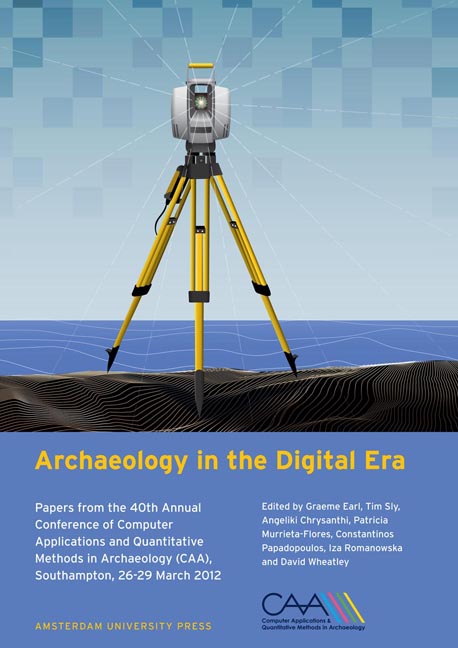 Archaeology in the Digital Era
Archaeology in the Digital Era Exploring the Effects of Curvature and Refraction on GIS-based Visibility Studies
Published online by Cambridge University Press: 16 February 2021
Summary
Abstract:
The curvature of the earth affects visibility studies when using a DEM (Digital Elevation Model) and needs to be taken into consideration as pointed out by Conolly and Lake in 2006, although little work has been done in archaeology to explore the implications of this warning. This paper addresses related methodological issues in visibility studies namely the issue of reality, of edge effects, and of significance. We use the long barrows of the Danebury region in England as a case study. New methods to calculate and assess the combined effects of curvature and atmospheric refraction on visibility studies are presented. It is shown that within a visibility range of 10km there is a decrease in visibility of approximately 20% for the Danebury landscape; the effect is larger at areas closer to the horizon.
Keywords:
GIS, DEM, Visibility, Earth Curvature, Atmospheric Refraction
Introduction
The justification and attractiveness of performing visibility studies using GIS is that it is an attempt to model human visual perception and understand situated visual experiences and their significance to past landscape settings (Wheatley 2004). Much work on visibility has focused on the placement of monuments in the landscape. Archaeological features may be several kilometres away from the observer and the drop in visibility may severely affect how monuments are perceived at distance, especially on approach. The motivation for visibility research is that the analysis of visibility patterns can shed light on human occupation and landscape use and exploitation, and the relative importance of selected landscape regions and features. Examples of archaeologically-oriented visibility research include a survey of GIS and non- GIS visibility studies with particular application to stone circles in the Grampian region of Scotland (Lake and Woodman 2003), archaeology and GIS- based spatial technologies (Lock and Harris 2000), studies of visibility prominence of monuments (Llobera 2001), and an investigation of whether or not the siting of the Bronze Age cairns of North Mull Island in Scotland have a causal influence of their visible area (Fisher et al. 1997).
Despite widespread acceptance of GIS as a tool for visibility analysis, there has been justified criticism of early attempts at GIS-based analysis as it encourages objectivism and ignores subjective experience (Wheatley 1993; Gaffney and van Leusen 1995; Brück 2005:54).
- Type
- Chapter
- Information
- Archaeology in the Digital EraPapers from the 40th Annual Conference of Computer Applications and Quantitative Methods in Archaeology (CAA), Southampton, 26-29 March 2012, pp. 428 - 437Publisher: Amsterdam University PressPrint publication year: 2014
